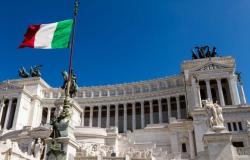At least one rival carrier to compete on short-haul flights, the transfer of a “congruous” package of slots (take-off and landing rights) to Milan Linate airport and interventions to protect in particular the consumer traveling in Economy and therefore it is more sensitive to price changes. The package of remedies that the Ministry of Economy and Lufthansa sent to the EU Antitrust to get the green light for the Germans’ entry into Ita Airways is based on these three aspects, according to what they told the Courier two community sources. Sacrifices that Brussels on Monday 17 June deems sufficient, thus removing the last obstacle to a wedding at high altitude.
At Linate
But what does the remedy package provide in detail? At Milan Linate airport, the union of Ita and Lufthansa would lead to a joint share of 63% of the slots in a particularly valuable business-oriented airport. The two entities will give up 15-17 daily pairs (equal to 30-34 flights, considering both directions), more than the 11 pairs currently owned by the Lufthansa group.
Short-haul flights
These take-off and landing rights will be used in two ways. The first: to allow a rival carrier to enter the routes identified as problematic at Linate (and Rome Fiumicino). This – which must be authorized by the EU – will have to guarantee the same route, with the same frequency as Ita today and for at least three years. The second mode of use would allow the incoming carrier – or another, still rival – to open a base at Linate and start new routes. The airlines with which there is a preliminary agreement are easyJet and Volotea. And the connections are those between Linate and Fiumicino with Lufthansa hubs in Germany, Belgium, Switzerland and Austria.
Intercontinental travel
It is about the Italy-North America flights that there has been a long discussion – and argument – about. After an at times exhausting back and forth, the EU gave a positive opinion on the latest proposal sent to Brussels on Sunday evening. On the “problematic” routes between Rome Fiumicino and San Francisco, Washington, Chicago and Toronto, either there is a new rival carrier that guarantees the direct connection (also in this case with the same frequency and for at least three years) or, in the absence of this, two airlines must arrive to guarantee a flight with a stopover, but which lasts no more than three hours longer than the direct flight.
The 3 hour constraint
These airlines may also already be operational. For example: an Air France trip on the Rome-Paris-San Francisco segment. But if the overall duration is more than the 180 minutes set as a limit – because, for example, the stopover in Paris lasts 4 hours – then either Air France takes care of “shortening” the stopover, to stay within 3 hours, or Italy – Lufthansa will have to worry about putting their own flight to Paris to feed the French intercontinental flight.
The Brussels approach
Why this position? According to the EU Antitrust, it is a way to protect customers who fly in Economy class, who are more sensitive to price (stopover flights cost less on average than direct ones), unlike those traveling in Business who have very few budget problems because maybe he travels for work (and the company pays) or for pleasure.
The technical steps
The EU green light (the announcement is expected between 2 and 4 July) will be the start of a long operational and commercial “move”. Speaking on the sidelines of the IATA general assembly in Dubai at the beginning of June, CEO Spohr explained that “it will take 18 months to integrate Ita into the group”, a galaxy that includes Swiss, Austrian Airlines, Brussels Airlines, Eurowings, Air Dolomites, maintenance, cargo.
The joint venture
In parallel, Rome and Frankfurt will ask the regulatory authorities of the USA and Canada for Ita’s entry into the A++ transatlantic joint venture that Lufthansa manages with United Airlines and Air Canada and which guarantees billions of euros in revenues every year. Ita will then have to move from the SkyTeam alliance (where it is today with Air France-KLM and Delta Air Lines) to Star Alliance, co-founded by Lufthansa and in which the Germans are one of the key “shareholders”.
The nominations
Speaking of shareholders: entry into ITA – initially at 41% – will lead to the appointment by Frankfurt of two members of the board of directors of Italia Trasporto Aereo Spa (the company that manages the Italian carrier) who will be added to the three of the Mef. If the Italians appoint the president (the current one is Antonino Turicchi), the Germans will appoint the CEO.
The Alitalia brand
Routes, timetables, fares, customer management, loyalty program, commercial agreements: there is this and more to integrate and adjust. And while Frankfurt’s first objective is to bring Ita to profit, the Germans also have a dream: to get the Alitalia brand off the ground again.





